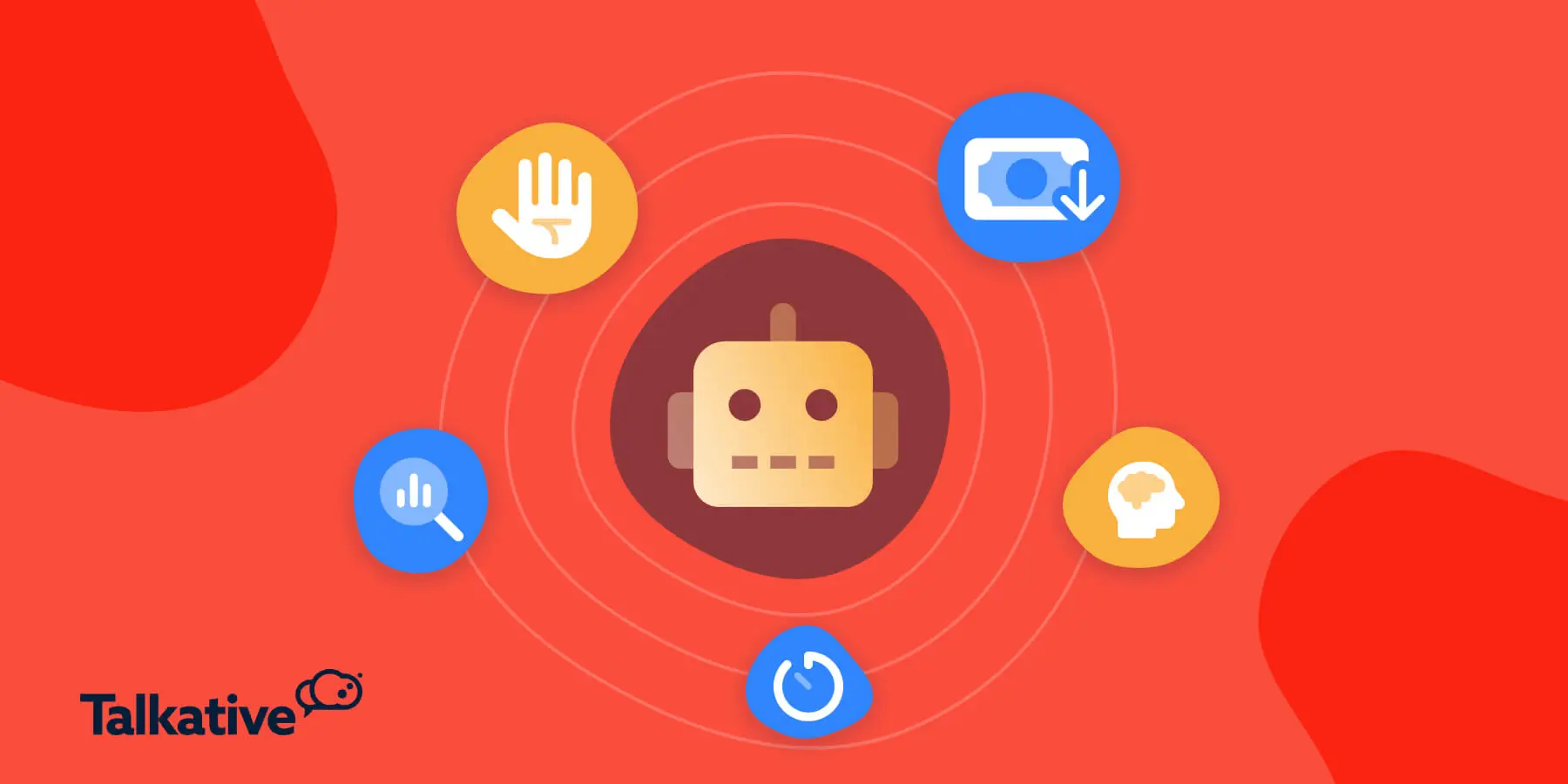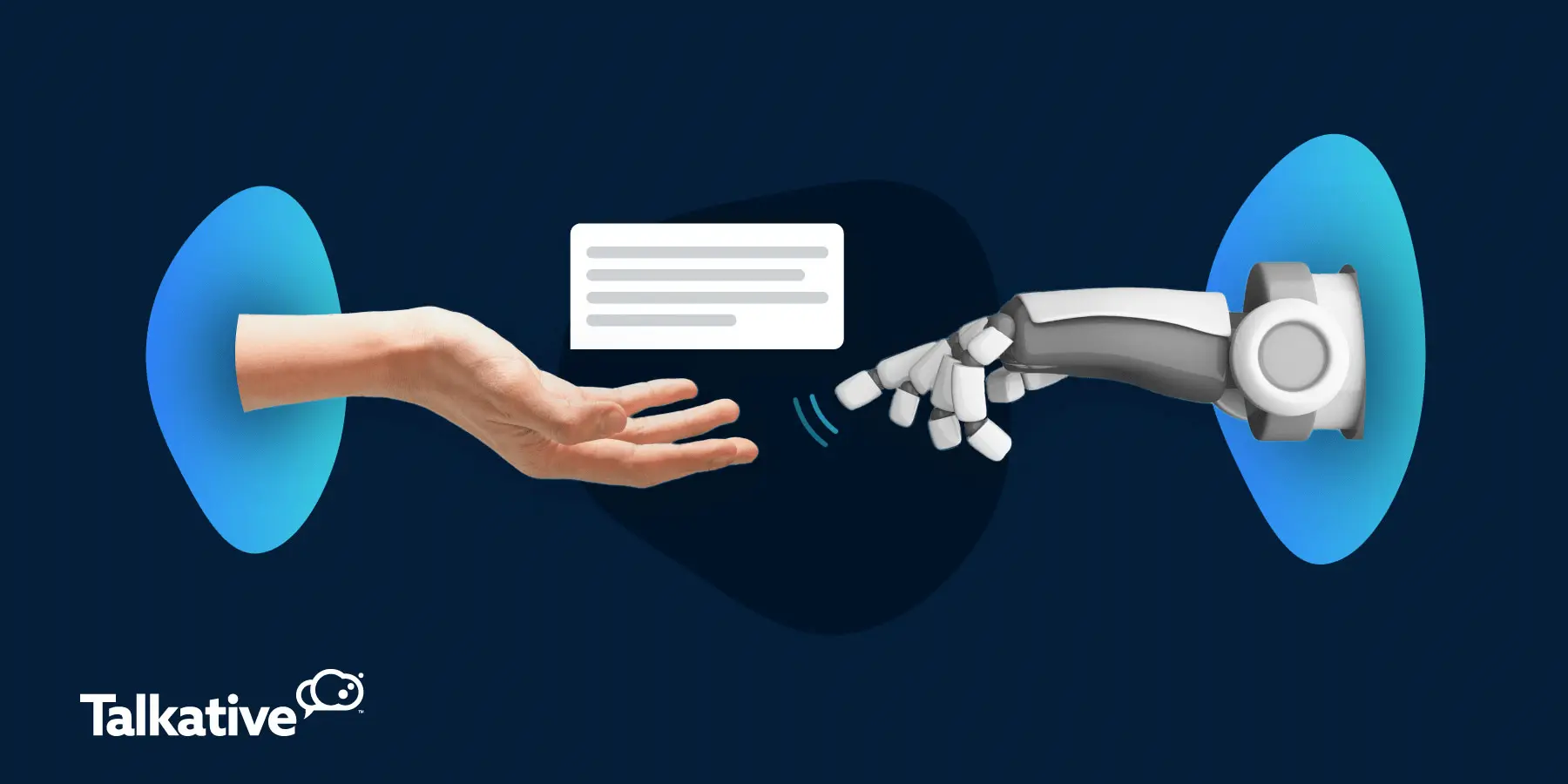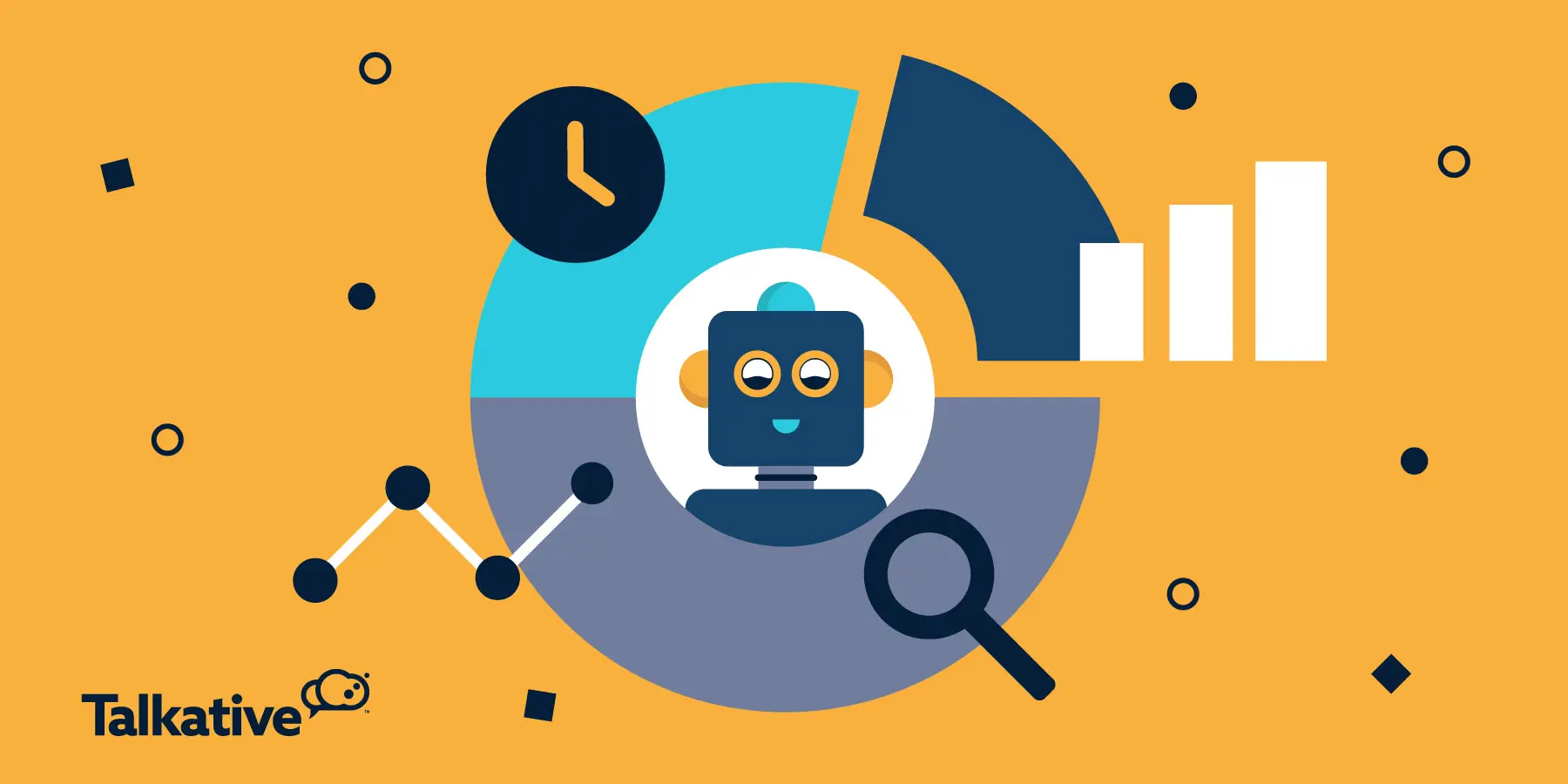Chatbots have become a staple in the world of digital customer service.
In fact, consumer usage of chatbots has doubled since 2020, with more and more brands using them to provide automated support.
Yet, despite their increasing popularity, chatbots remain a subject of controversy, with opinions divided on whether they’re a help or a hindrance.
While some see bots as a valuable tool for customer self-service and improving efficiency, others find them frustrating and are sceptical of what they can actually achieve.
Whatever camp you fall in, the truth is that not all chatbots are created equal.
Different types of chatbots serve different purposes and have varying capabilities.
The key to success is knowing these differences so you can choose the right bot for your specific business needs and customer service goals.
Fortunately, we’ve put together this guide to help you understand your options and decide the best fit for your brand. We’ll cover:
- What is a customer service chatbot?
- The different types of chatbot and how they work
- Pros and cons of each type of bot
- Choosing the right chatbot for your business
TL;DR
Rule-based Chatbots
- Pros: Structured and consistent, well-suited for FAQs and specific tasks.
- Cons: Limited adaptability, struggles with ambiguity, lacks natural language understanding.
Intent-based Chatbots
- Pros: More flexible, adapts to various inputs, maintains conversation context, can use NLP.
- Cons: Requires extensive development and maintenance, may struggle with language nuances.
AI Chatbots
- Pros: Utilizes NLP, ML, and GenAI for human-like responses, scalable for diverse tasks.
- Cons: Costlier to implement, performance depends on data/training quality.
Hybrid chatbots
- Pros: Combines rule-based, intent-based, and AI elements for versatility.
- Cons: Complex architecture, potential GenAI drawbacks.

What is a chatbot?
In the context of customer support, a chatbot is a computer system designed to interact with consumers through your website, app, and messaging channels.
They can be used across various devices (i.e. computers, laptops, smartphones, etc.) and often appear as a chat widget in the right-hand bottom corner of the screen.
In simple terms, chatbots work by generating automated responses/outputs to user messages, simulating a back-and-forth conversation.
Their main purpose is to reduce the demand on human agents by answering customer queries, providing relevant information, and automating repetitive support tasks.

Different types of chatbots explained
The scope of a chatbot’s capability and functionality can vary massively - depending on the type of bot and how it’s programmed.
In this section, we’ll explore the different types of chatbots, what they can do, and the pros/cons of each design.
1. Rule-based (decision tree) chatbots
Rule-based bots were the first generation of customer service chatbots.
These systems follow a “decision tree” framework. They’re programmed with predefined rules and conditions that often require users to select their response from a selection of keywords or phrases.
The chatbot’s decision tree is a hierarchical structure where each node represents a decision point, and the branches lead to possible responses based on the user’s input or system variables.
During an interaction, a rule-based chatbot evaluates user input against its rule set, progressing through the decision tree to identify the most relevant response.
As the customer provides information or asks questions, the chatbot navigates through the tree, responding according to the rules defined for each scenario.
Pros:
- Rule-based bots provide structured and consistent responses as they follow predefined rules, ensuring accuracy within their specified scope.
- The decision tree structure makes it easy to understand and modify the bot’s behaviour, allowing developers to have total control over its responses.
- Well-suited for specific and narrowly defined tasks, rule-based bots are a cost-effective solution for answering FAQs.
- Rule-based bots don’t require extensive training datasets or complex AI models, which can make them quicker to develop and deploy.
Cons:
- Rule-based bots struggle to handle ambiguous or unforeseen user inputs since they rely on predefined rules and cannot adapt well to new or unexpected scenarios.
- Scaling a rule-based bot to go beyond answering FAQs is extremely challenging. As the complexity of tasks and possible inputs increases, the decision tree/rule set will become cumbersome to manage and maintain, requiring frequent updates and adjustments.
- Rule-based bots lack the ability to truly understand and replicate natural human language, relying on pattern matching and predefined rules instead. This can result in a frustratingly “bot-like” user experience.
- Unlike AI-powered models, rule-based bots cannot learn from data or user interactions, limiting their ability to improve over time.

2. Intent-based chatbots
The second generation of chatbots uses “intents” to provide a more flexible range of possible customer conversations.
An intents-based chatbot can identify and understand the user’s intent or purpose behind their input during an interaction.
These models are programmed with predefined intents, representing the different goals or actions a customer may be attempting.
Intent-based chatbots utilise natural language processing (NLP) technology to match customer inputs/messages with an intent and then generate the appropriate response.
Intents are often associated with specific actions or functionalities that the chatbot can perform, allowing it to guide the conversation and fulfil user requests.
Pros:
- Intents-based chatbots leverage NLP to understand customer input, providing a more conversational and user-friendly experience.
- Unlike rule-based bots, these systems can adapt to various user inputs and handle a wider range of queries/tasks.
- Intent-based bots can maintain context within a conversation, remembering previous messages to provide more coherent responses.
- Intents-based chatbots can be designed to go beyond FAQs, making them scalable for certain other use cases.
Cons:
- Developing effective intents and training the chatbot to recognise them accurately requires technical expertise plus a lot of time and effort - especially if you need the bot to handle varied and complex intents.
- Like their rule-based counterparts, intent-based bots need to be managed, maintained, and regularly updated, which can be very time-consuming.
- Even with the help of NLP, intents-based chatbots can still struggle with natural language nuances, leading to potential misinterpretations.
- The performance of intents-based chatbots depends on the quality and diversity of the training data, which may limit their effectiveness in certain scenarios.

3. AI-powered chatbots
Advancements in AI customer service have given rise to a third generation of chatbot technology.
AI-powered bots leverage technologies like conversational AI, natural language processing (NLP), and generative AI (GenAI) to understand and respond to customer inputs
Unlike rule-based or intents-based models, artificial intelligence can process and learn from vast datasets, generate human-like responses, identify patterns, and improve their performance over time.
These advanced systems can be trained to automate huge amounts of queries and tasks, allowing them to act as virtual agents for your customers.
They can even be integrated with an AI knowledge base. For instance, with Talkative’s generative AI chatbot, you can quickly import URLs from your company website, plus any other file-based cpntent or resources.
From there, the bot can learn from your website/knowledge base content and answer countless questions about your business, products, and services - using the data you input plus generative AI.
Pros:
- AI-powered chatbots can be trained quickly and easily with extensive datasets (e.g. your knowledge base) and Large Language Models (LLMs), enabling them to produce highly accurate, on-brand responses
- Advanced NLP and GenAI models excel at understanding and replicating natural language, allowing for more humanised, fluid, and contextually relevant conversations. This also reduces the chance that the bot will misunderstand a customer’s meaning/intent.
- AI chatbots can be scaled to handle a far wider and more diverse range of queries, interactions, and tasks than rule- or intents-based bots.
- Machine learning allows AI bots to learn from the data you input and improve their performance over time.
Cons:
- These chatbots still rely heavily on the quality and quantity of information you give them, meaning their performance can suffer if the training data is biased or limited.
- Building and deploying an AI-powered chatbot can be more costly than implementing a rule-based or intent design.
- Like all technology, AI chatbots have limitations - managing hallucinations, data privacy, knowledge management, and maintenance are all considerations for a successful AI deployment.

4. Hybrid chatbots
Hybrid chatbots combine elements of rule-based, intents-based, and AI-powered models to utilise the strengths of each approach.
These systems aim to provide a versatile and effective solution that can handle a broad spectrum of user interactions.
Hybrid chatbots typically use predefined rules/intents for specific tasks but also incorporate AI technologies to expand their scope, adaptability, capabilities, and natural language understanding.
This might mean that the bot uses a decision tree structure to answer FAQs but leverages AI when faced with more complex issues.
Pros:
- Hybrid chatbots offer a flexible architecture, allowing developers to define rules and intents for structured tasks while also incorporating AI models for more complex interactions.
- Like AI bots, hybrid chatbots can integrate with your knowledge base and Large Language Models (e.g. OpenAI's GPT models), ensuring high accuracy and a humanised customer experience.
- The combined approach to their design and programming makes hybrid chatbots an extremely versatile tool that can be easily scaled to handle diverse tasks and industry-specific requirements.
Cons:
- Designing the initial architecture and ensuring smooth collaboration between rule-based and AI-powered elements can be a complex process.
- Keeping all the components of a hybrid chatbot up-to-date may pose maintenance challenges.
- Like AI bots, a hybrid approach can fall victim to the potential drawbacks of GenAI (e.g. hallucinations).

The takeaway: Choosing the right bot for your business
Getting the best results from a chatbot requires choosing the right type of bot for your brand.
To make this choice, you need to define your objectives. In other words, what do you want the chatbot to achieve for your business and customers?
If you want an intelligent bot that can learn over time and deliver the most advanced automated support in a humanised way - an AI-powered or hybrid chatbot is probably the best choice.
But, if you just want to decrease some of the demand on your contact centre in a cost-effective way, an intent or rule-based chatbot might be more suitable.
Either way, Talkative has you covered.
With our scalable and flexible chatbot solution, you can:
- Choose between an AI-powered or rule/intent-based bot (or a combined approach- an AI chatbot with rule-based fall-back for maximum efficiency)
- Train chatbots using your website and knowledge base, making them experts in your brand, products, and services
- Deploy bots across your website, app, and messaging platforms
- Seamlessly escalate to human agents when needed
- Provide multilingual customer service without any additional downloads or plugins
- Design multiple bots in-house with our user-friendly chatbot builder (if you prefer to take the wheel with bot design)
- Automate customer-specific queries with chatbot fulfilment
What’s more, our developer and customer success team can help you with any concerns you have regarding the limitations of AI.
In addition to chatbots and AI solutions, we offer a suite of customer contact channels and capabilities - including live chat, web calling, video chat, cobrowse, messaging, and more.
You can even pick and choose the channels/features you need, allowing you to tailor our platform to fit your business and contact centre needs.
Book a demo with Talkative today, and check out our interactive product tour.



